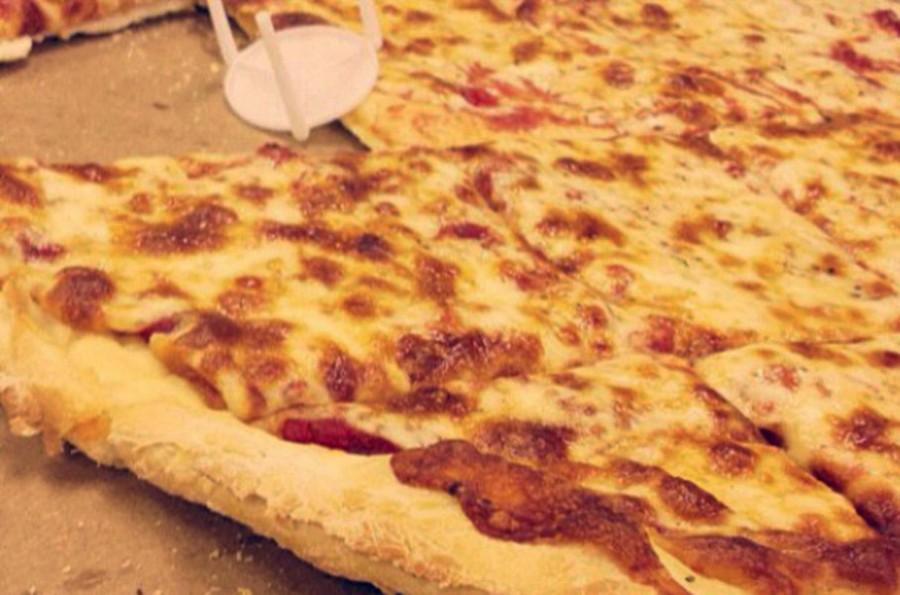Teens consume too much pizza
March 2, 2015
It’s a typical Wednesday. Naperville North junior McKenzie Rediehs returns home from a tiring day of quizzes and dance practice.
Rediehs throws a Home Run Inn pizza into the oven. With a dense stack of worksheets to complete, three chapters of a book to read, a speech to memorize and a test to study for, there’s no time to prepare a Gordon Ramsay worthy meal.
“Pizza is just so convenient,” Rediehs said. “It’s the easiest option on days when I’m really busy.”
What Rediehs didn’t know is that her pizza contains ten grams of saturated fat and well over half of the suggested daily sodium intake.
According to a study conducted by the University of Illinois at Chicago, on any given day, one in four teens eats pizza for a meal or a snack. When pizza is consumed, it takes up about 20 percent of the suggested daily calorie intake.
According to Julia Marsiglio, a graduate student and teacher’s assistant for human nutrition at the University of Illinois at Urbana-Champaign, having a balanced diet is an important part of being a healthy teenager.
“Eating a variety of foods is important for proper nutrition,” Marsiglio said. “If teenagers consume too much of the same thing, such as pizza, they may be missing out on important nutrients from other foods they could be eating instead, such as a variety of fruits and vegetables, whole grains, fish, meat, etc.”
Due to high amounts of saturated fat and sodium, overconsumption of pizza can result in obesity and heart disease, according to an article published in Tech Times.
According to the Center for Disease Control and Prevention, obesity in adolescents has more than quadrupled in the past 30 years. For this reason, the Tech Times article advises teens to eat pizza as a meal rather than a snack and to accompany pizza with vegetables and salads.
In District 203, pizza is one of the options offered through the school lunch provider, Sodexo. All meals that are served must meet nutrition guidelines called the Healthy, Hunger-Free Kids Act established by the United States Department of Agriculture (USDA) Food and Nutrition Service.
Sodexo general manager in District 203 Barbara Brown said the pizza served at schools in the district are following all federal nutrition guidelines.
“We do make our own pizza here daily, and we have to analyze the nutritional components of everything we serve,” Brown said. “We have limits, and if we use a recipe that has high levels of sodium, we get a red flag. It will say that in our analysis.”
According to NNHS health teacher Clint Hunter, many kids choose pizza because of its accessibility.
“Teenagers eat a whole lot of pizza because it’s so convenient,” Hunter said. “They are so busy nowadays that they fuel their body with things that aren’t going to help their bodies function properly over a long period of time.”
Marsiglio also recognized the convenience of pizza. Additionally, she said that teenage eating habits can be a consequence of their surroundings.
“Teenagers’ food choices are influenced by a lot of things including what and when their families are eating, what their peers are eating and what is available,” Marsiglio said.
According to Hunter, health classes at NNHS address nutrition issues by emphasizing balance, moderation and variety.
“It’s not realistic to cut pizza or all negative food out of your diet, so maybe instead of six slices you cut back to three slices, or instead of having it two days on the weekend, you just have it on Friday,” Hunter said.
According to Marsiglio, teenagers hold the responsibility of maintaining a healthy diet.
“Teenage years are a time for figuring things out,” Marsiglio said. “Nutrition is a skill that needs to be learned.”

Hannah Flack • Apr 8, 2021 at 5:11 am
“Spot on with this write-up, I truly think this website needs
far more attention. I’ll probably be returning to see more, thanks for the information!”
Regards Hannah Flack
Alisha Ross • Apr 5, 2021 at 6:41 am
Hi there I am so happy I found your web site, I really found you by mistake, while I was
browsing on Bing for something else, Anyways I am here now and would just like to say
thank you for a fantastic post and a all round entertaining blog.
Regards
Ross Alisha